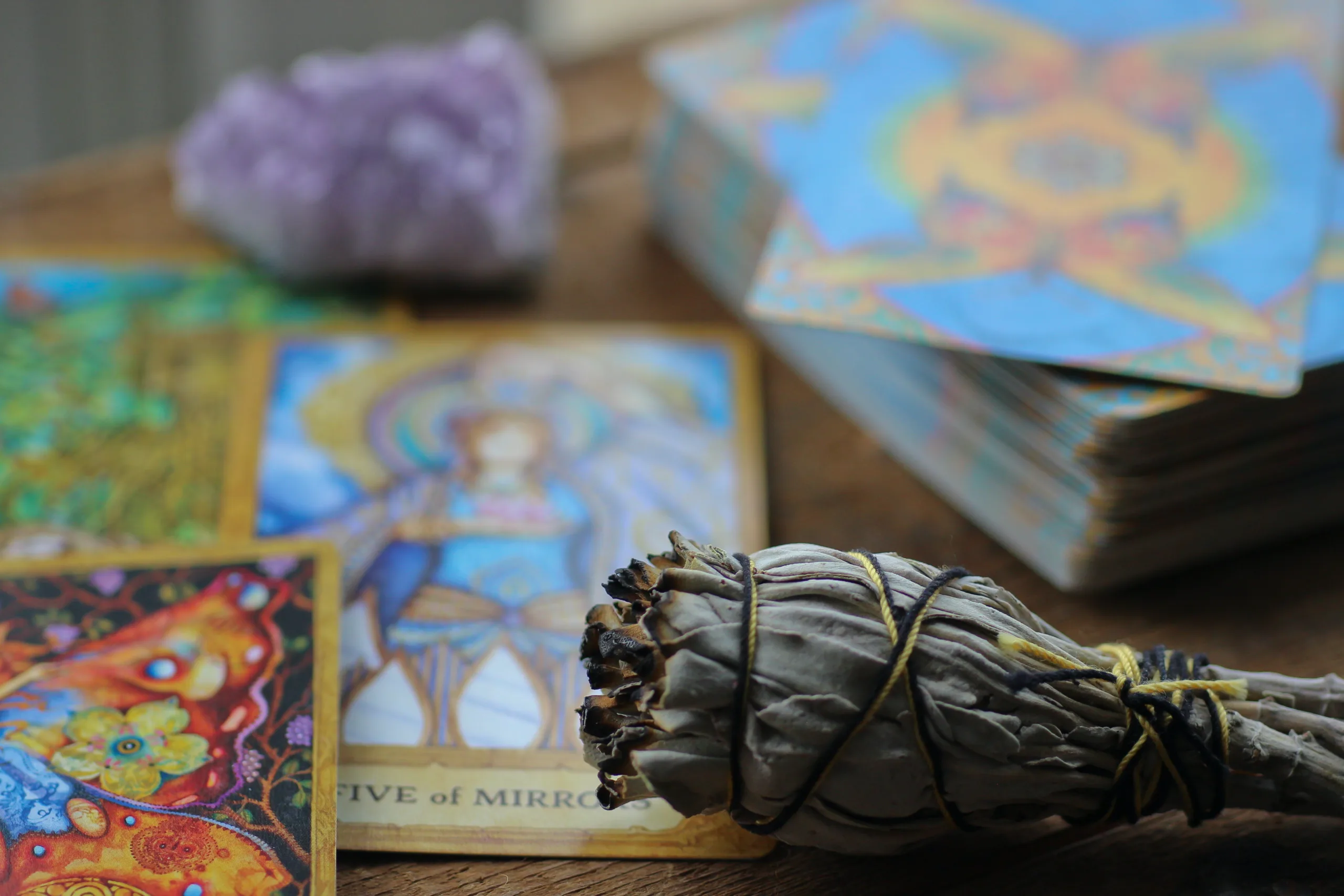What does a tarot card reversed mean?
Tarot cards have been part of spiritual practices for over five centuries, serving as means for divination, introspection, and advice. Some view tarot cards as a gateway to the subconscious mind, revealing new perspectives and engaging with deep emotions. While most people are familiar with the standard, upright representations of tarot cards, there is an added layer of complexity when a card is drawn in reverse. This flipped perspective introduces a unique interpretation that can dramatically change the meaning of a reading.
 Image by Kayla Maurais. Source: Unsplash.
Image by Kayla Maurais. Source: Unsplash.
Understanding Tarot Cards
Tarot cards originated in the mid-15th century in Italy, originally designed for playing games. It wasn’t until the 18th century that tarot began its journey to spiritual and occult symbolism. Modern spirituality uses tarot as a tool for introspection, guidance, and interpreting life’s mysteries.
Introduction to Reversed Tarot Cards
In a tarot card reading, it’s common for cards to appear both right-side up and reversed. This positioning isn’t random; tarot readers consider the card’s direction while interpreting its symbolism and meaning. Chances are you have asked yourself: "What does a tarot card reversed mean?" If so, this article is here to help dissolve these uncertainties and offer clarity.
Objective of The Article
This article is intended to demystify reversed tarot cards and offer insights into their interpretation. By exploring these unique meanings, we will enhance our understanding of tarot’s symbolic language.
Fundamentals of Reversed Tarot Cards
Difference Between Upright and Reversed
An upright card often signifies that its energy is freely flowing or positively present in the querent’s life. On the other hand, a reversed card suggests that this energy is either internalized or blocked in some fashion.
Common Misconceptions About Reversed Tarot Cards
One of the most widespread myths about reversed tarot cards is that they always bring negative news. While reversed cards can signify challenges or delays, their main purpose is to highlight areas where change or introspection may be needed.
Interpreting Reversed Tarot Cards
Navigating Different Interpretations
It’s important to understand that context matters when interpreting reversed tarot cards. If a reversed card appears in a future position, it might signify potential obstacles or anxieties that need to be confronted.
Intuition and Experience over Set Meanings
Tarot interpretation relies heavily on intuition. While every card in the tarot deck carries traditional meanings, reversed or not, the reader must also factor in personal interpretations and experiences.
Deep-dive – Major Arcana Reverse Meanings
With that in mind, let’s move toward a detailed consideration of each most iconic tarot card’s reversed implications.
The Fool through The Chariots (0-7)
These iconic cards embody some of the fundamental archetypal forces of life. When these cards appear reversed, they dive deep into both our rewarding and challenging experiences, further accentuating the spirit of introspection.
Strength through Temperance (8-14)
Interpreting these cards when appearing reversed depend heavily on your personal journey. While ‘Strength’ may indicate an internal struggle for courage, ‘Temperance’ might be urging you to achieve balance in your preferred facets of life.
The Devil through The World (15-21)
The last set of Major Arcana tarot cards when reversal can imply an inward exploration of one’s fears, desires, revelations, and triumphs over adversities.
Conclusion
Summarizing Reversed Tarot Cards
Understanding the unique meanings of reversed tarot cards can add depth and intricacy to tarot readings. Rather than signifying negative outcomes, these reversed positions can shed light on the obstacles, anxieties, and potential misjudgments impacting our lives.
The journey of tarot reading
Reading and interpreting tarot, especially with reversed cards, is about embarking on a journey of self-discovery. It isn’t about establishing fixed truths but rather opening up a world of personal insights and spiritual contemplation.
FAQs
Q1: Is a reversed tarot card always negative?
Q2: How do I know if pulling a reversed card is significant in my reading?
Q3: Do all Tarot readers use reversals in their readings?
Q4: What does it mean if I pull many reversals in one reading?